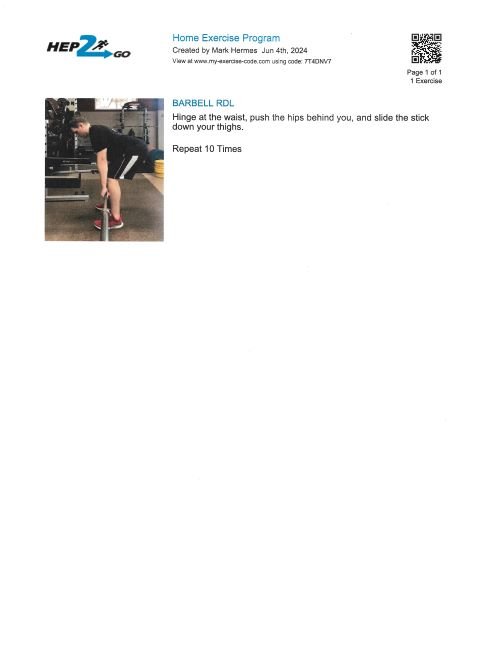1. 04/15/24:
a. Lower Trunk Rotations:
b. Heel Slides:
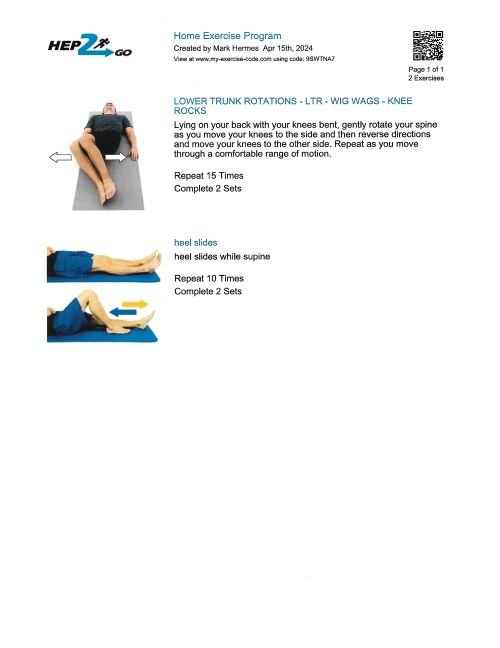
2. 04/17/24:
a. Sciatic Nerve Glide:
b. Seated Piriformis Stretch:
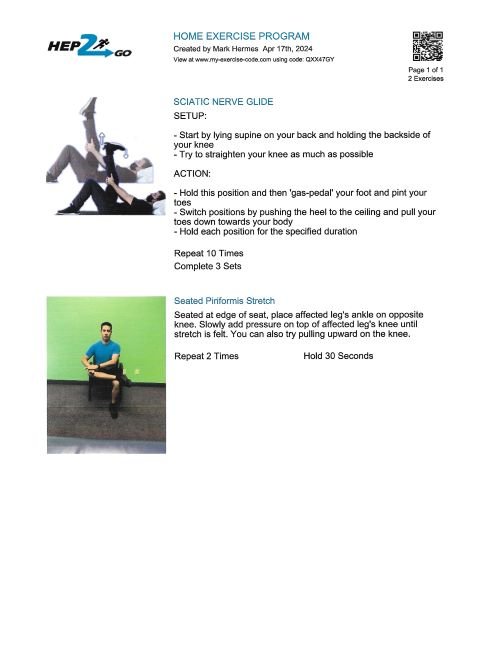
3. 05/02/24:
1. Prone Press Ups:
Repeat 10 times. Hold 10 seconds. Perform 2 times a day.
2. Myofascial Stick Roller to Quad/Hamsring/Calf:
Hold 1 minute.
3. Lower Trunk Rotations – LTR – WIG WAGS – KNEE ROCKS:
Repeat 20 times. Perform 1 time a day.
4. Sciatic Nerve Glide:
Repeat 10 times. Complete 1 set.
5. Supine Piriformis Stretch:
Hold for 30 s. Repeat on the opposite side.
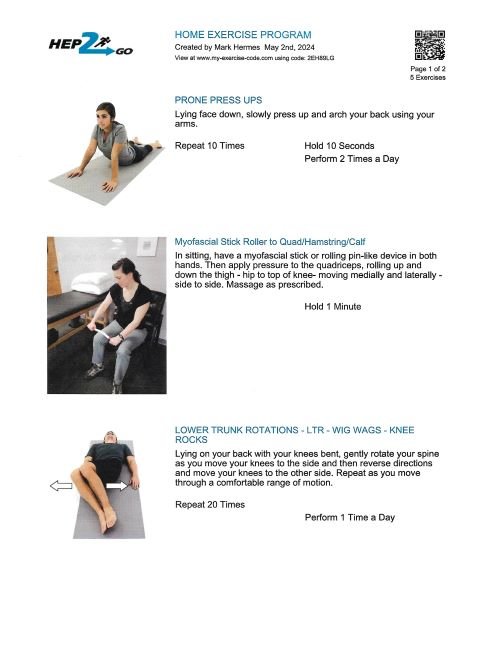

4. 05/07/24:
1. Sidelying Open Book:
2. Upper Trap Stretch – Holding Chair and Head:
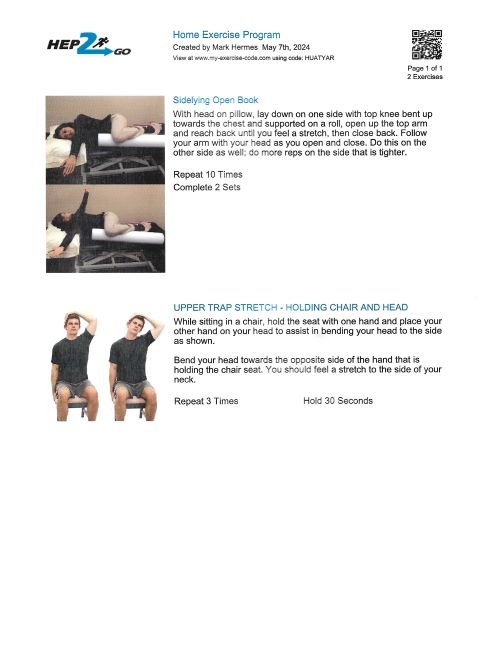
5. 05/14/24:
1. Standing Adductor Stretch:
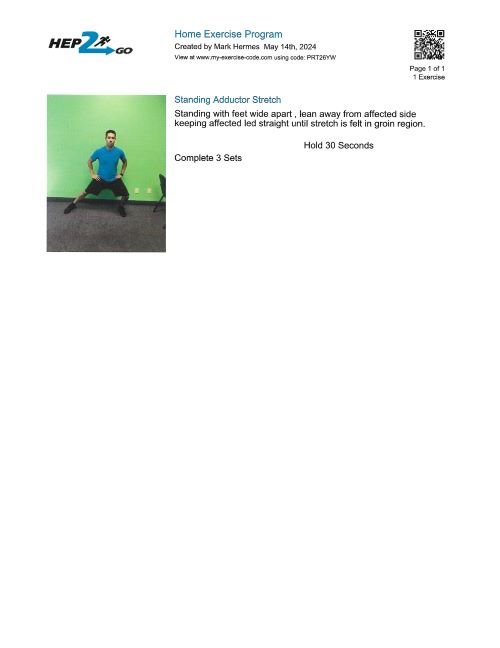
6. 05/21/24:
1. Prone Quad Stretch with Belt or Strap:
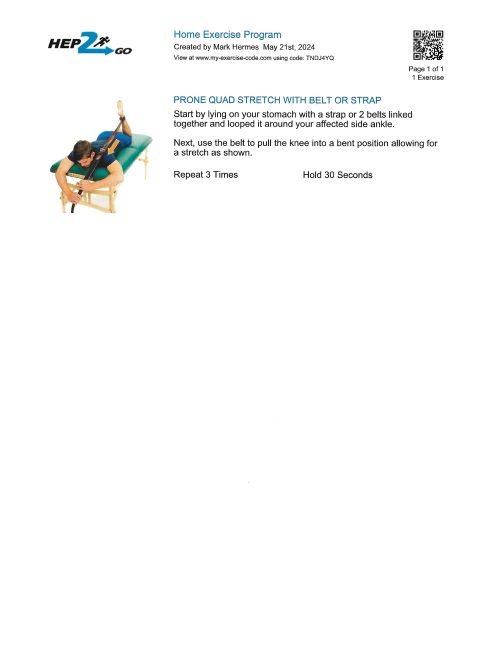
7. 06/04/24:
1. Bent Over Rows:
